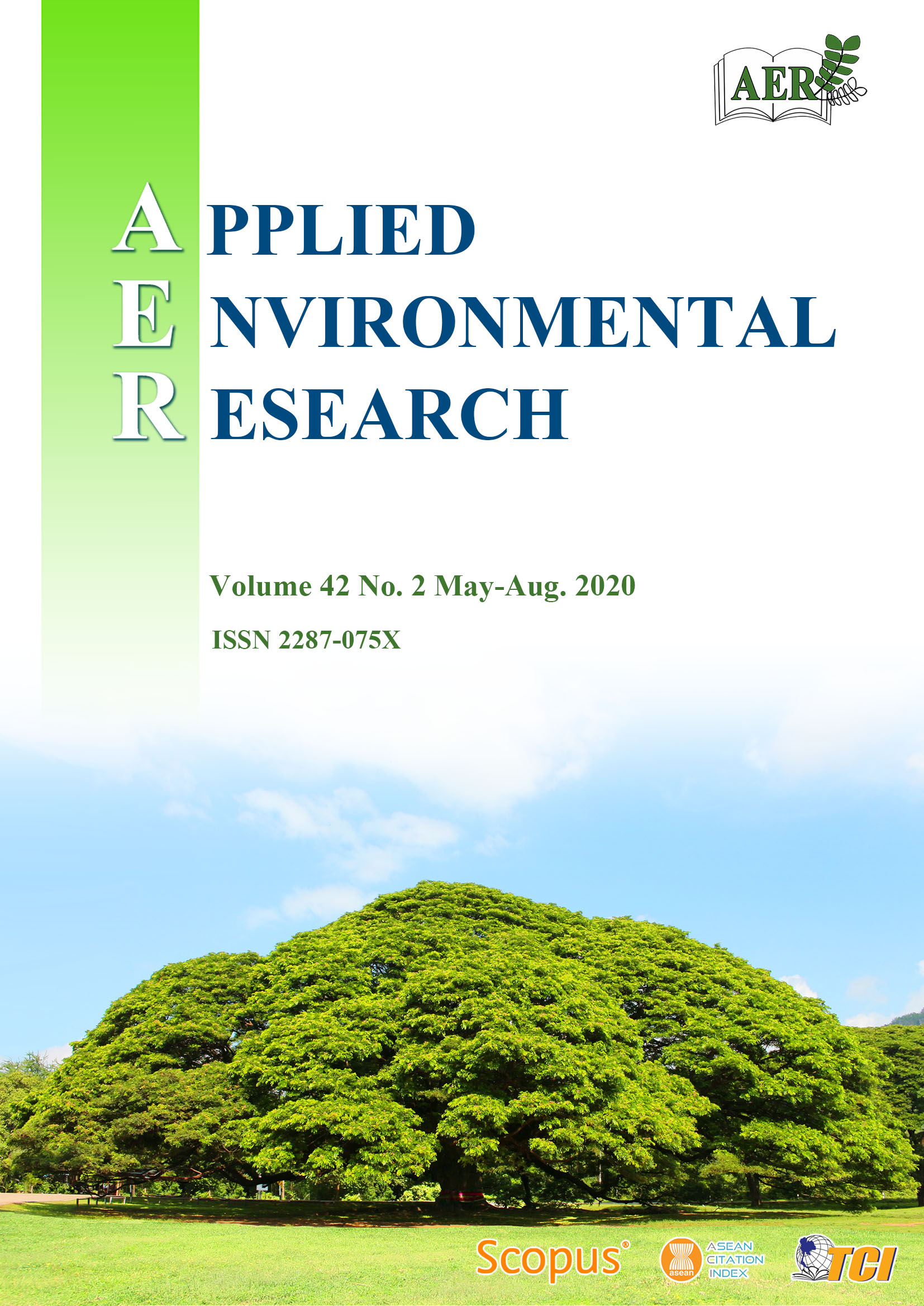Organic Matter, Solid and Pathogen Removals from Black Water in a Pilot-Scale Solar Septic Tank
Main Article Content
Abstract
Demonstrating the operational feasibility of a solar-powered septic tank as an alternative and sustainable sanitation option for communities was presented in this study. The efficiency and technical feasibility of a solar septic tank (SST) were tested and evaluated in pilot scale for treatment of black water from communal toilets. The system consisted of a modified septic tank equipped with a disinfection chamber inside the tank. Solar radiation was collected as a heat source for heating and disinfection. The system could achieve high removal efficiencies of total chemical oxygen demand (TCOD), 5-day biological oxygen demand (BOD5), total solid (TS), and total volatile solid (TVS) of 97%, 94%, 91% and 96%, respectively. The inactivation efficiencies of E. coli and total coliforms in the SST were about 2.2 log reduction. The increased temperature inside the septic tank could help to inactivate pathogens and reduce the environmental issues related to conventional fecal sludge management. In turn, this improved the water quality of groundwater and surface water and minimize health risks. Influence of operational conditions including organic/nutrient loading rate and ratio between TCOD and TKN in the black water on the performance of the SST were discussed.
Article Details

This work is licensed under a Creative Commons Attribution-NonCommercial 4.0 International License.
Published articles are under the copyright of the Applied Environmental Research effective when the article is accepted for publication thus granting Applied Environmental Research all rights for the work so that both parties may be protected from the consequences of unauthorized use. Partially or totally publication of an article elsewhere is possible only after the consent from the editors.

